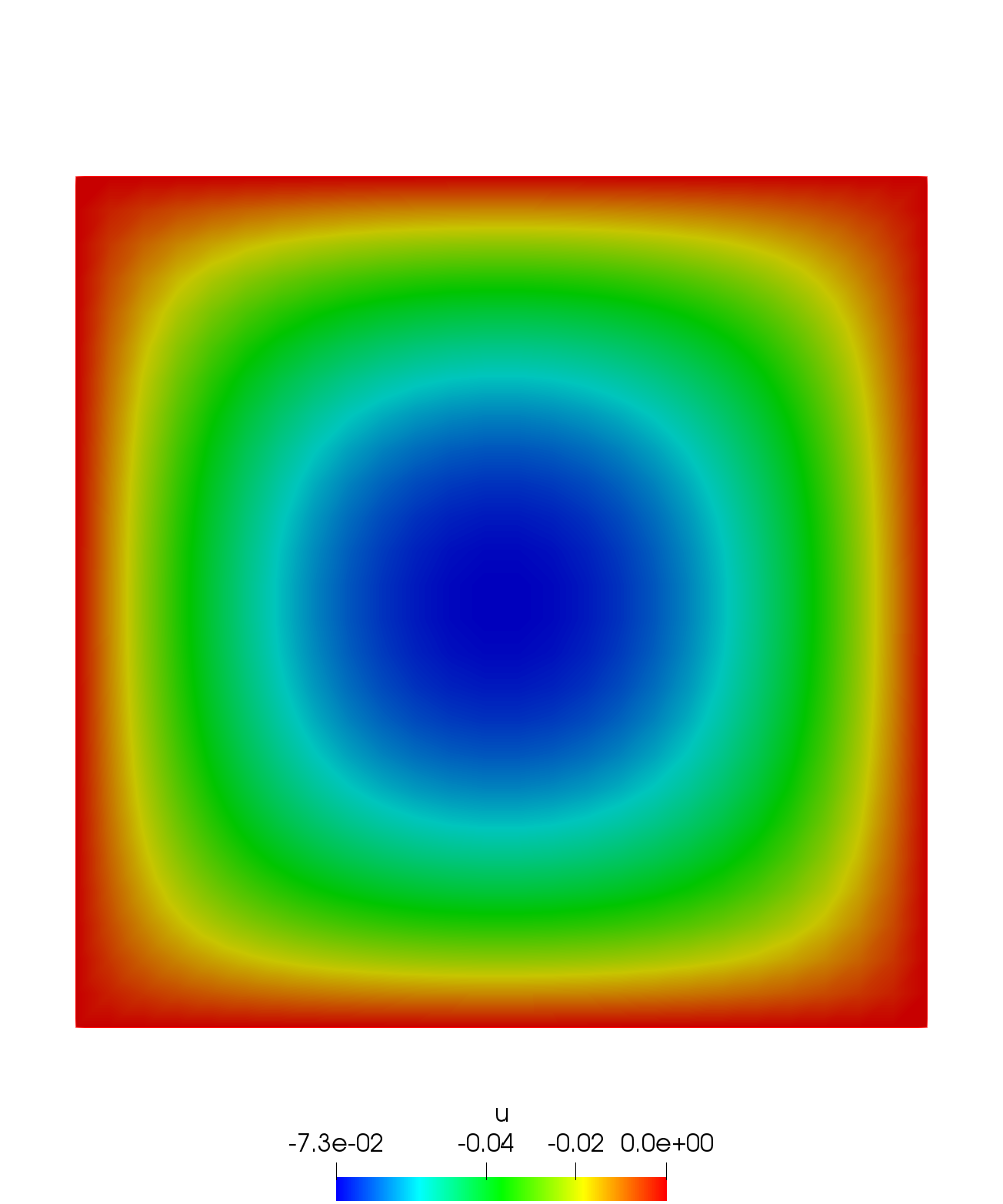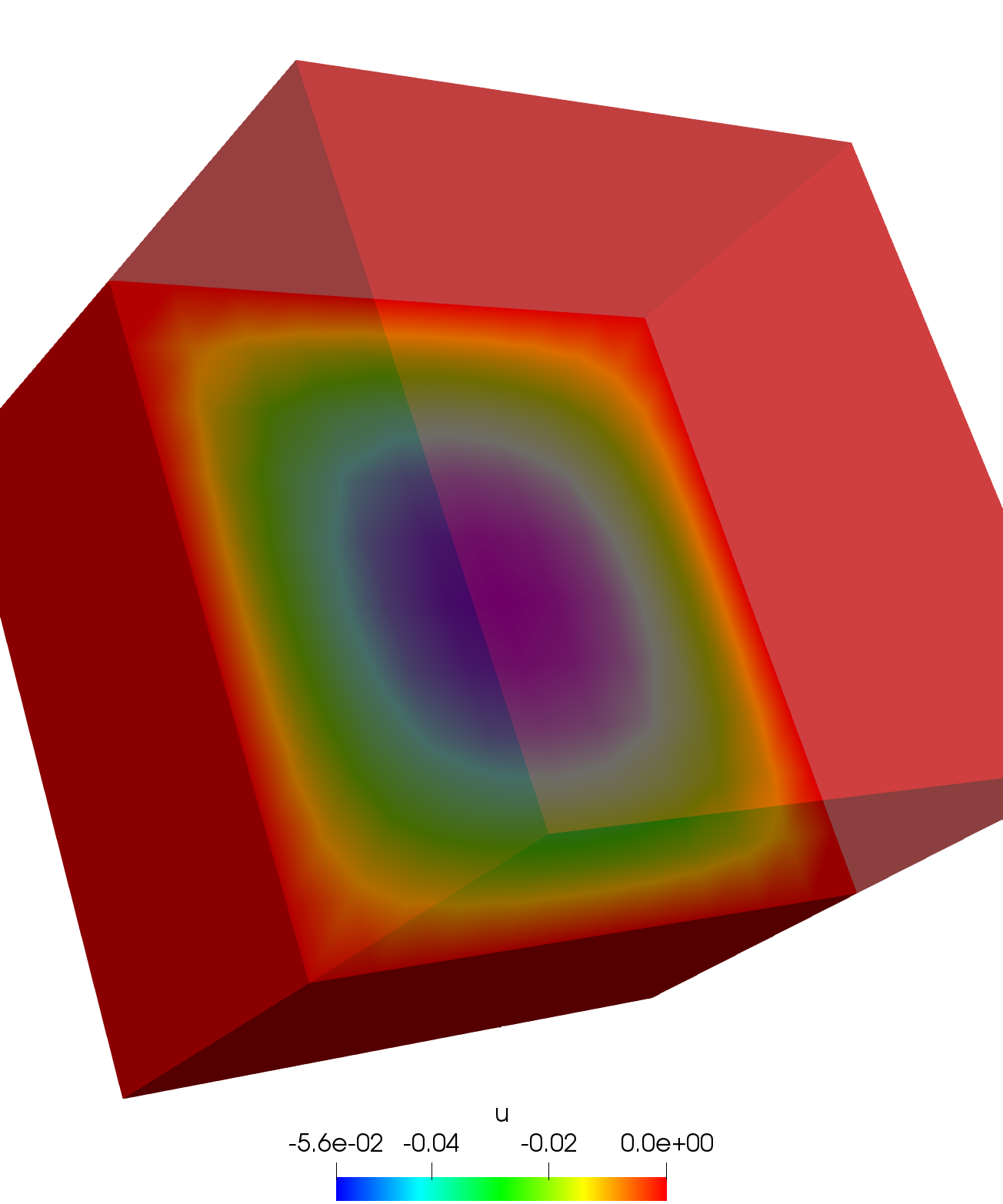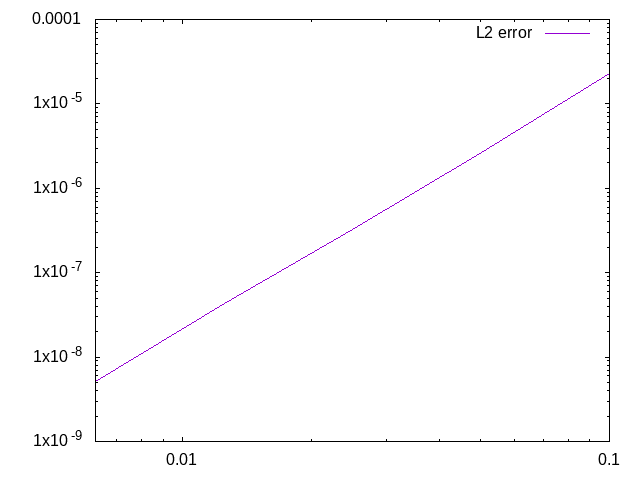Poisson
Algorithms for solving the 2D and 3D Poisson’s equation
Problem
Let $u\in\mathbb{R}$, solve:
$ -\displaystyle{\Delta u = f} $
With $f$ an external force.
Variational form
Let $\Omega\in\mathbb{R}^n$, $2\leq n\leq3$. Let $u, v\in H^1(\Omega)$. The variational form reads as follows:
$ \displaystyle{-\int_{\Omega}{\Delta u v} - \int_{\Omega}{f v} = 0} $
Using the Green formula:
$ \displaystyle{\int_{\Omega}{\nabla u \cdot \nabla v} - \int_{\Omega}{f v} = 0} $
Algorithms
2D
Poisson’s equation on a square.
// Parameters
func f = 1.;
// Mesh
int nn = 25; //Mesh quality
mesh Th = square(nn, nn);
// Fespace
func Pk = P2;
fespace Uh(Th, Pk);
Uh u;
// Macro
macro grad(A) [dx(A), dy(A)] //
// Problem
varf vPoisson (u, uh)
= int2d(Th)(
grad(u)' * grad(uh)
)
+ int2d(Th)(
f * uh
)
+ on(1, 2, 3, 4, u=0)
;
matrix<real> Poisson = vPoisson(Uh, Uh, solver=sparsesolver);
real[int] PoissonBoundary = vPoisson(0, Uh);
u[] = Poisson^-1 * PoissonBoundary;
// Plot
plot(u, nbiso=30, fill=true, value=true, cmm="A");| Result |
|---|
 |
3D
Poisson’s equation on a cube.
include "cube.idp"
// Parameters
func f = 1.;
// Mesh
int nn = 10;
mesh3 Th = cube(nn, nn, nn);
// Fespace
func Pk = P2;
fespace Uh(Th, Pk);
Uh u;
// Macro
macro grad(A) [dx(A), dy(A), dz(A)] //
// Problem
varf vPoisson (u, uh)
= int3d(Th)(
grad(u)' * grad(uh)
)
+ int3d(Th)(
f * uh
)
+ on(1, 2, 3, 4, 5, 6, u=0)
;
matrix<real> Poisson = vPoisson(Uh, Uh, solver=sparsesolver);
real[int] PoissonBoundary = vPoisson(0, Uh);
u[] = Poisson^-1 * PoissonBoundary;
// Plot
plot(u, nbiso=30, fill=true, value=true, cmm="A");| Result |
|---|
 |
Validation
2D
Let $u_e$ be the analytical solution on $\Omega=[0,1]^2$:
$ \displaystyle{ u_e = x(1-x)y(1-y)e^{x-y} } $
We get, for homogenous Dirichlet conditions on $\partial\Omega$:
$ \displaystyle{ f = -2x(y-1)(y-2x+xy+2)e^{x-y} } $
and the following convergence curve:
| Convergence curve |
|---|
 |
The slope obtained with this algorithm is equal to $3.0235$, which corresponds to the theoretical value of $3$.
The complete validation script is available here
Authors
Author: Simon Garnotel
